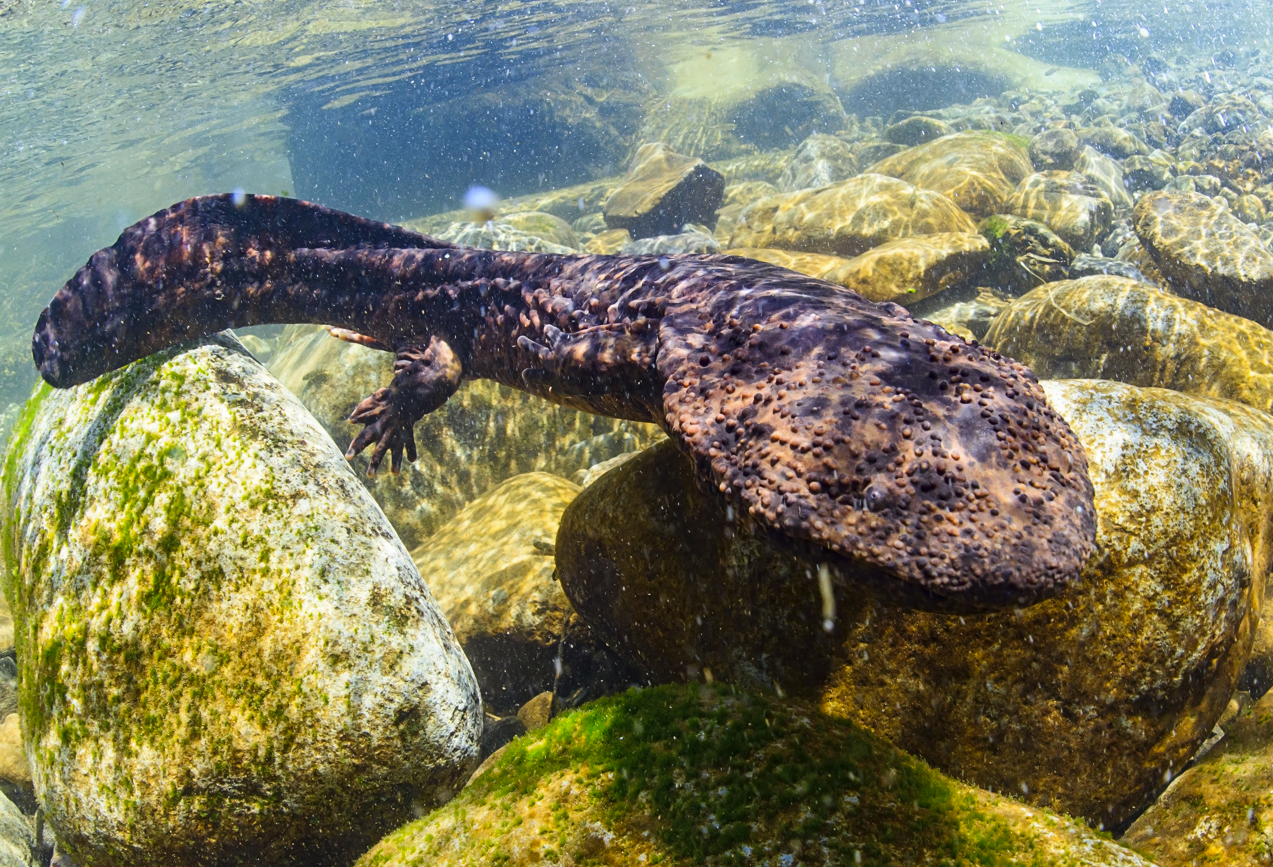Roughly the size of a small human, the Chinese giant salamander is one of the largest amphibians in the world. These blob-like beasts are sometimes called “living fossils” as they belong to a lineage stretching back 170 million years. In recent decades, however, a new phenomenon has emerged in their strange and twisting tale: hybrids.
Growing up to 1.8 meters (5.9 feet), Chinese giant salamanders are native to the rocky mountain streams of Central China. With flat heads, tiny eyes, and loose folds of wrinkled skin, they cut a strange figure that could be easily confused for a freckled rock or a flattened dinosaur.
They’re listed as a “critically endangered” species under the IUCN Red List, primarily as a result of overharvesting. In their native homeland of China, these rare animals are highly prized as delicacies and used in traditional medicine.
Throughout the 1960s and ‘70s, hundreds of these animals were imported into Japan as novelty food items and exotic pets. So the story goes, the Japanese government attempted to restrict restaurants serving the rare meat in 1973. The trade fizzled out, causing many traders to release the remaining animals from China into the Japanese wilderness.
There are also reports of hundreds of giant salamanders being imported to a private house in Okayama Prefecture, many of which are believed to have escaped.
Handfuls survived in this new ecosystem, where they came into contact with a relative from the same genus, the Japanese giant salamander.
Scientists have noted how these two species managed to “hit it off” and started hybridizing in Japan’s streams. In a 2024 study, researchers collected 68 samples from giant salamanders in the Kamogawa River of Kyoto, as well as several samples from private collections, aquariums, and zoos throughout Japan.
They found that some of these individuals were hybrids of Japanese giant salamander and Chinese giant salamander, created by the two species interbreeding. In some cases, it appears that hybrid offspring also mated with each other or others from the “genetically pure” populations, creating an even deeper mix of hybridity and gene mixing.

Similar but different: A Japanese Giant Salamander in a mountain river.
Image credit: Martin Voeller/Shutterstock.com
Even aside from hybrids, giant salamanders are a taxonomic headache. Back in 2019, scientists confirmed that Chinese giant salamanders were, in fact, made up of three different species, with the South China giant salamander being the largest. Then, in 2024, further work revealed they might actually be up to nine different species.
Dividing them into more species made their conservation awkward. While protections exist for some recognized species, they do not automatically extend to newly identified ones, many of which still lack official names.
In Japan, these conservation issues are even more difficult because of the hybrids. No wild pure Chinese salamanders have been seen in Japan since 2011, meaning they are nearly extinct there. The species is also rapidly falling into extinction in its native China and will likely soon disappear.
Conservationists are now racing to find the last surviving giant salamanders. especially females, to establish breeding programs and safeguard their future. The challenge is tricky because their efforts must keep the Chinese and Japanese species apart, yet they look almost identical and are notoriously hard to discern without fancy DNA testing.
Source Link: Interbreeding Hybrid Giant Salamanders Are Creating A Very Sticky Situation For Conservationists